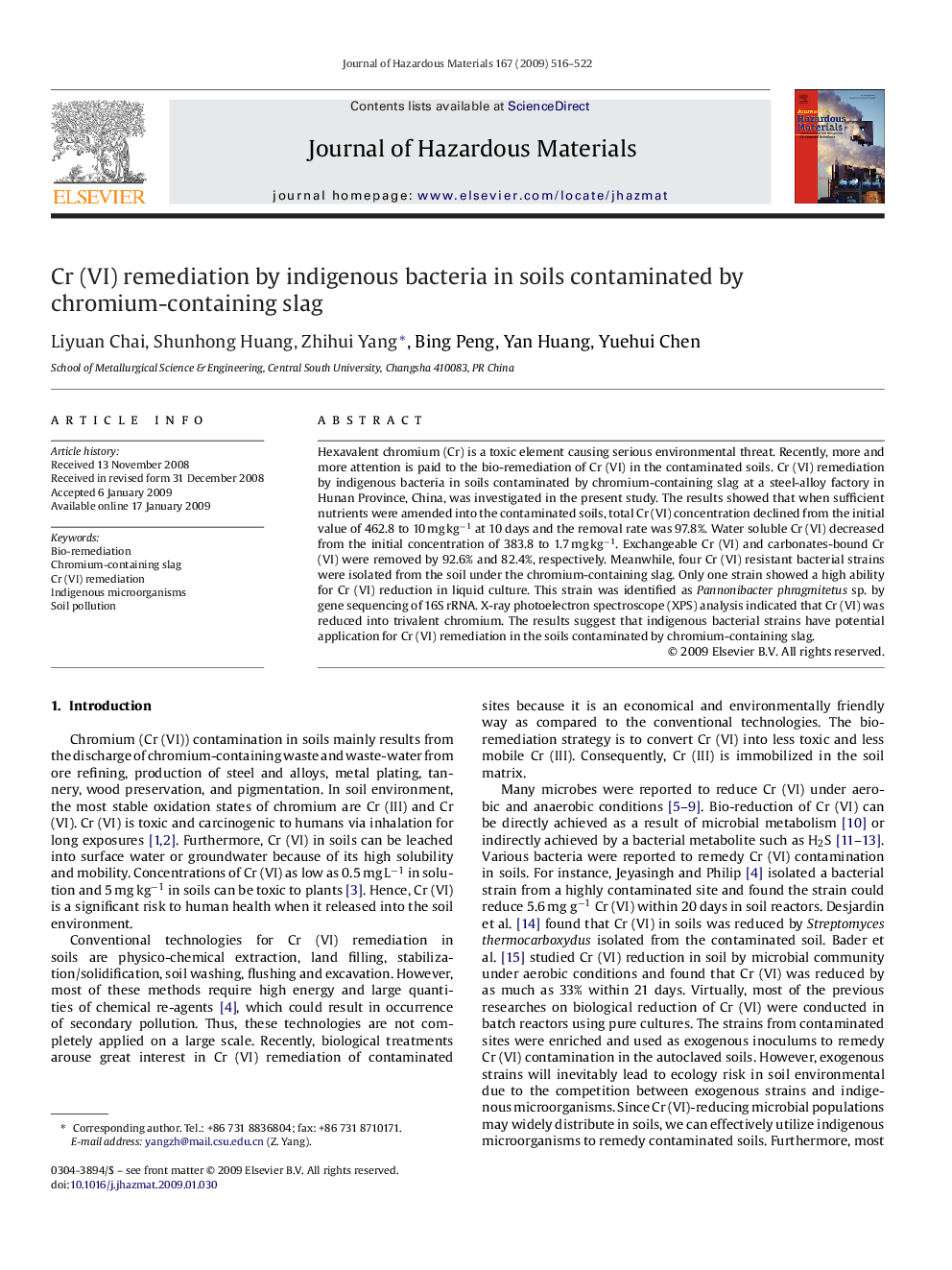| Article ID | Journal | Published Year | Pages | File Type |
|---|---|---|---|---|
| 581813 | Journal of Hazardous Materials | 2009 | 7 Pages |
Abstract
Hexavalent chromium (Cr) is a toxic element causing serious environmental threat. Recently, more and more attention is paid to the bio-remediation of Cr (VI) in the contaminated soils. Cr (VI) remediation by indigenous bacteria in soils contaminated by chromium-containing slag at a steel-alloy factory in Hunan Province, China, was investigated in the present study. The results showed that when sufficient nutrients were amended into the contaminated soils, total Cr (VI) concentration declined from the initial value of 462.8 to 10 mg kgâ1 at 10 days and the removal rate was 97.8%. Water soluble Cr (VI) decreased from the initial concentration of 383.8 to 1.7 mg kgâ1. Exchangeable Cr (VI) and carbonates-bound Cr (VI) were removed by 92.6% and 82.4%, respectively. Meanwhile, four Cr (VI) resistant bacterial strains were isolated from the soil under the chromium-containing slag. Only one strain showed a high ability for Cr (VI) reduction in liquid culture. This strain was identified as Pannonibacter phragmitetus sp. by gene sequencing of 16S rRNA. X-ray photoelectron spectroscope (XPS) analysis indicated that Cr (VI) was reduced into trivalent chromium. The results suggest that indigenous bacterial strains have potential application for Cr (VI) remediation in the soils contaminated by chromium-containing slag.
Related Topics
Physical Sciences and Engineering
Chemical Engineering
Chemical Health and Safety
Authors
Liyuan Chai, Shunhong Huang, Zhihui Yang, Bing Peng, Yan Huang, Yuehui Chen,
